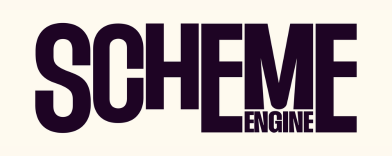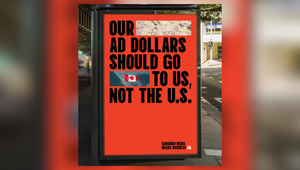
Sunburn as Medium in Real-Time DOOH Installation

Last summer, the Wonderhood Studios’ team read a “shocking BBC article on the rise of skin cancer across the UK,” said account manager Minna Griffiths. The cases of melanoma – the deadliest form of skin cancer – are on the rise, and only 27% of Brits protect their skin adequately from sun damage. This prompted them to proactively approach The British Skin Foundation (BSF) to help raise awareness of the danger and damage that prolonged sun exposure poses to unprotected skin.
The idea to watch healthy skin burn in real-time was with Wonderhood from the start. The British Skin Foundation was the perfect fit for the campaign as the team had previously created “a very simple, punchy ‘More More More’ campaign in 2024, encouraging the British public to protect their skin through more shade, more sun cream and more protective clothing,” Minna adds.
The team’s challenge? In Minna’s words, to “cut through in a sea of communication around sun protection and really shock the British public into action.” Wonderhood addressed that challenge with ‘The Burnable Billboard’, a striking campaign featuring close-ups of skin that burned from real-time UV exposure in locations across the UK, powered by AI.
“The BSF’s insight highlighted two core issues: first, a widespread lack of awareness that UV damage can be fatal in the UK as well as abroad; and second, the misconception that people with darker skin tones don’t need to protect themselves. We wanted to create something that didn’t just inform but confronted these myths head-on in public and in real-time,” explains head of strategy, Joe Harris.
Research conducted with the BSF revealed, says Joe, that “38% of Brits had already been burnt by the end of spring, with 49% assuming the sun wasn't strong enough and 31% reporting that they ‘couldn't be bothered.’

The campaign's photography, shot by TheGardening.Club, is beautiful, plain and simple. It even skirts the edge of sultry, and that starting point was a very deliberate choice, say creatives Tad Buxton and India Penny, and ECDs Jack Croft and Stacey Bird. The team worked with photographer Paul Akinrinlola to capture the shots, close-up enough to show the damage yet distinct enough to identify which body part was being viewed. “Shooting the skin in this close-up, beautiful way created maximum juxtaposition when it became sunburnt, which we hoped would intensify its impact,” Tad and India say.
“Although we have seen a rise in SPF users and awareness, skin protection communication generally doesn’t expose the reality of the problem, often beautifying or glazing over the issue instead. With the Burnable Billboard, we wanted to confront the issue head-on, making the reality of sun damage unavoidable for the public,” the team adds.
Selecting billboard placements was a particularly strategic exercise. “We wanted our billboards to show up all across the UK, because sun damage can happen anywhere. In the UK, we are under the illusion that we only need to wear SPF when we go abroad; however, even in the north of the country, even on a cloudy day, we are at risk of sun damage,” says Tara Lidstone, account director.

High footfall, direct sun exposure, and high UV levels were key when choosing the hero sites “to ensure we got our message across in the best contextual way to the highest number of people,” she adds.
One of the sites, Westfield Stratford, was chosen due to its high footfall due to proximity to the station and in commuter tracks and the fact that it’s very exposed to the sun plus, Tara says “the stark contrast of the skin against the backdrop of the British weather really helped the site have as much impact as possible.”
The team's idea to utilise exact levels of UV stemmed from it being invisible and therefore often not registering as damaging. “We wanted viewers to walk past the board and think and worry that it could be them and their skin becoming damaged in the exact same scenario. We also wanted to expose that even in the UK, where UV reaches highs of 6 or 7, that this still poses a serious threat,” says India and Tad.
Accuracy was also present in the representation of how different skin tones react to excess UV exposure, and this was highly important for Wonderhood and BSF alike, “due to misconceptions and lack of education around how different skin types burn,” Minna explains.
Minna says the team worked closely with a British Skin Foundation dermatologist, Dr Bav Shergill, to really understand how sun damage shows up across each skin type and define each ‘stage’ of burn. Based on this, the technical team at TheGardening.Club created an AI model and trained it to simulate UV damage “not just in terms of redness or burn, but also in other signs like swelling and blistering, depending on skin type.” Dr Bav Shergill was consulted throughout the creative development process to ensure that what the team was creating was scientifically accurate.

Since the team wanted to show the dramatic effects of prolonged sun exposure on skin, they couldn’t do it ethically or practically on a real person. “We took a synthetic approach,” says Tomas Roope, co-founder at TheGardening.Club. “Sun damage doesn’t progress in a simple, linear way: it starts with redness, then leads to swelling, and finally blistering. To depict these stages, we began by photographing healthy skin," adds Natasha Johnson, Wonderhood's head of integrated production.
“Once the base images were selected and approved, the team used AI tools, under the guidance of dermatologists, to generate realistic versions of each key stage of damage. We then used AI-powered interpolation to create smooth, natural transitions between these stages, resulting in a continuous, convincing sequence that seamlessly reproduced the gradual effects of sun exposure. The production process was bookended by existing tools – still photography, development and coding – but AI was necessary to bring these elements together; realising this idea simply wasn’t achievable without this emerging technology,” explain Tomas and Natasha.
Training the AI model wasn’t straightforward, and Tomas calls the technology “a powerful, but unreliable collaborator.” First, he had to create a visual simulation of skin damage progressing over a six-hour period. Then, understand how to control this sequence during the live installation. Tomas says the team “designed the sequence to represent six hours of sun exposure, ending with how the skin would look after being unprotected for that duration. But rather than simply playing it back in real time, we wanted the sequence to respond to live UV levels.”
As UV exposure varies throughout the day, “the simulation needed to start slowly, accelerate toward midday, and then slow again. Any passing cloud would also reduce the speed at which the damage appeared,” he adds. “To make this work, we conducted extensive research into typical UV patterns and estimated the total UV exposure expected over the six-hour window. With these projections, we aimed to create a system that responded in real time to live UV data, while still reaching each key stage of skin damage at the right moment and completing the full sequence within the allotted time.”
Everyone who’s worked on this campaign is delighted to have used their creative and technical skills for a good cause, hoping to inspire more sun-safe behaviour in Brits. And the work is getting noticed too; LBB picked it as one of the highlights in our Work of the Week feature, and it made its way onto the BBC ahead of another heatwave. Now let’s all do as the campaign suggests and wear SPF next time we go outside on a sunny day.















